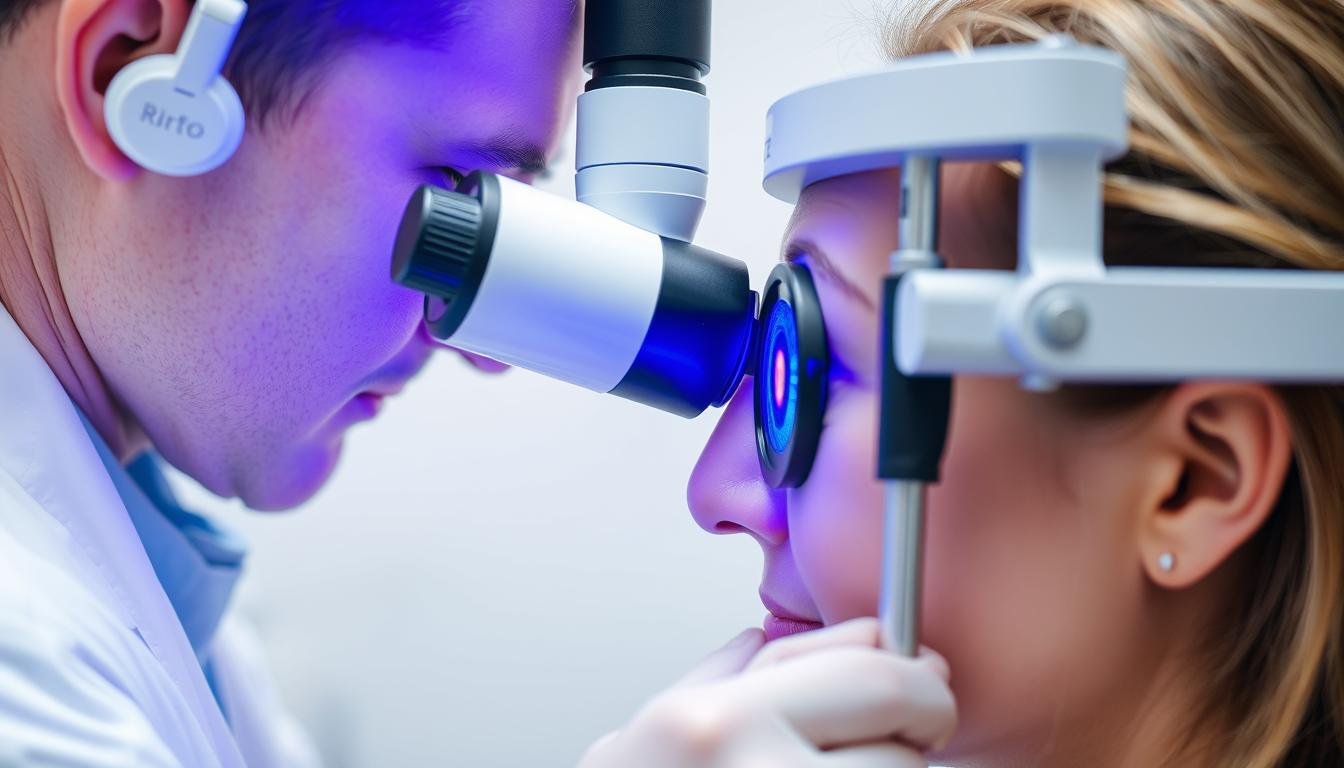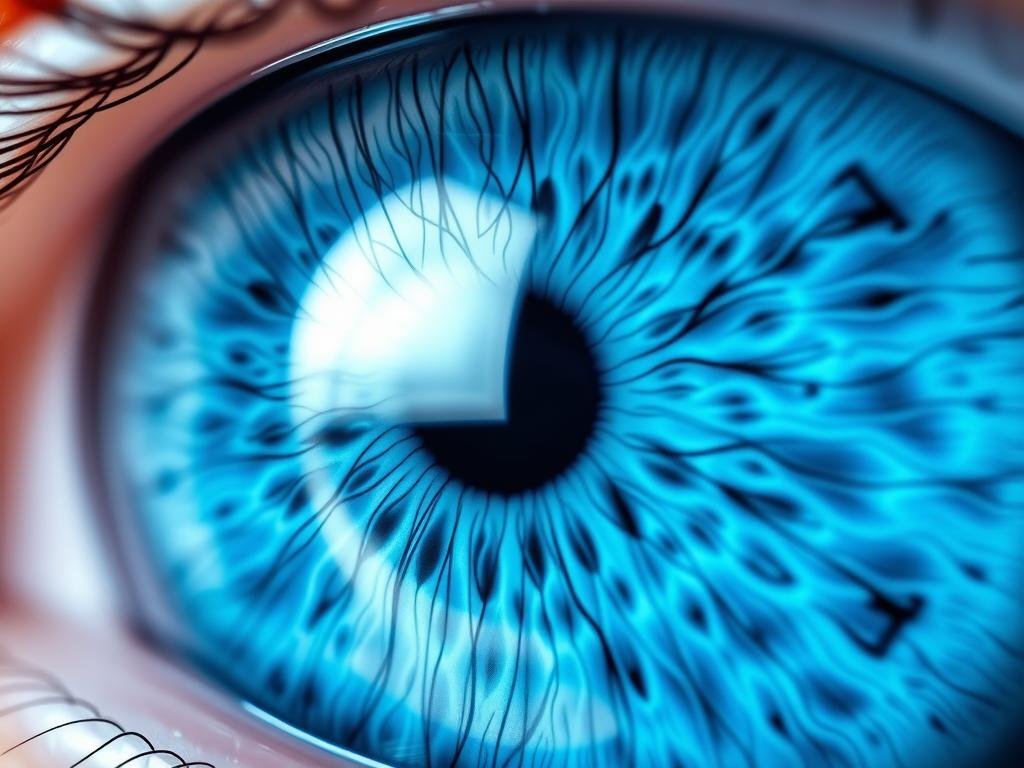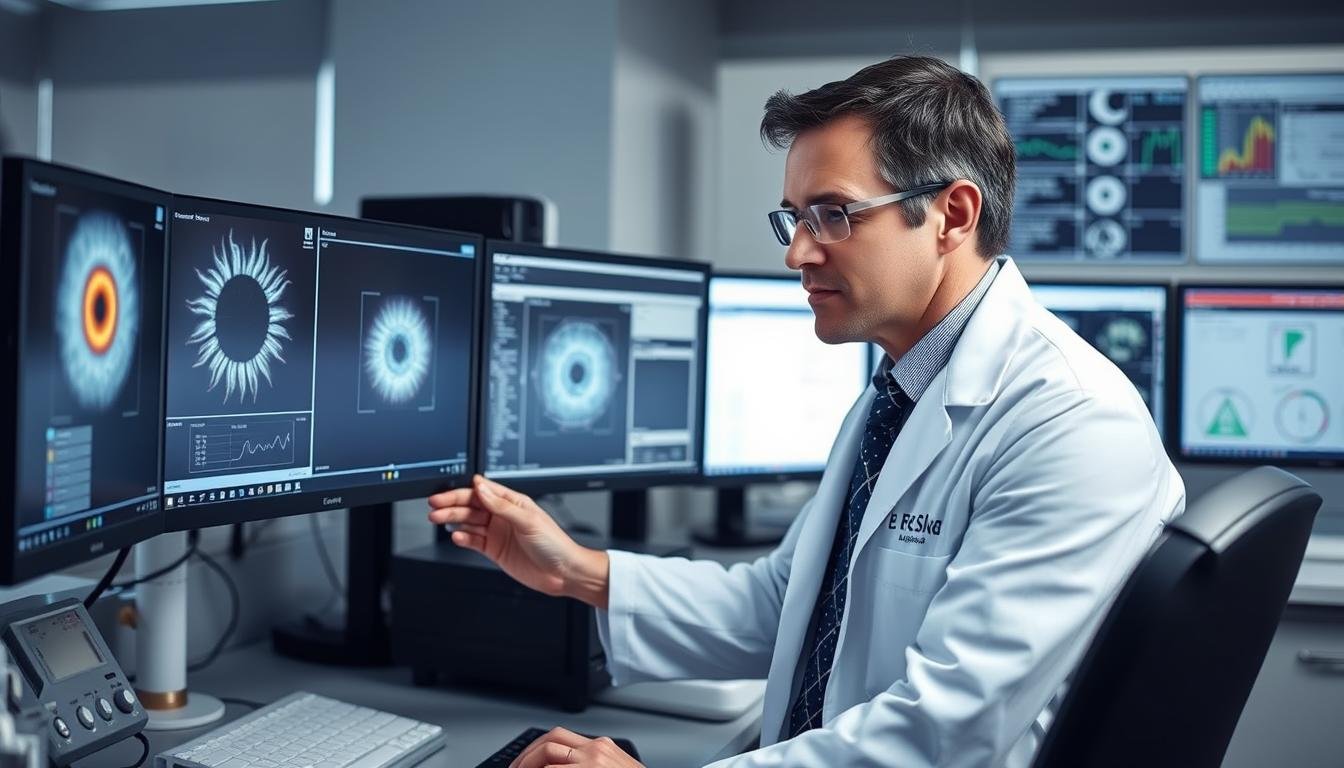In today’s health-conscious world, people are increasingly seeking non-invasive methods to monitor their wellbeing. Diagnóstico da IRIS de iridologia stands at the forefront of these alternative screening approaches, offering insights into potential health concerns through careful examination of the iris—the colored part of the eye. This ancient practice, combined with modern technology, provides a unique window into the body’s internal functioning without invasive procedures. As healthcare continues to evolve toward preventative approaches, understanding how iris analysis can contribute to your health monitoring toolkit becomes increasingly valuable.
Understanding Diagnóstico da IRIS de iridologia: The Basics

Modern iridology examination using specialized equipment
Diagnóstico da IRIS de iridologia is the study and analysis of the iris patterns, colors, and markings to evaluate a person’s overall health status. The practice is based on the principle that the iris connects to every organ and tissue in the body through the nervous system and can reflect changes in these tissues through alterations in iris fibers and pigmentation.
Iridologists use detailed iris charts that divide the iris into zones corresponding to different body systems and organs. By examining these zones, practitioners can identify signs of inflammation, toxin accumulation, and organ stress. Unlike conventional diagnostic methods, iridology doesn’t claim to diagnose specific diseases but rather identifies areas of weakness or stress that may lead to health problems if not addressed.
The Science Behind Diagnóstico da IRIS de iridologia
The scientific basis for iridology lies in the intricate connection between the iris and the central nervous system. The iris is directly connected to the brain via the optic nerve, which is not merely a bundle of nerve fibers but an extension of brain tissue. This direct connection allows the iris to display information about the body’s internal condition.
Each iris contains approximately 28,000 nerve fibers, making it one of the most complex structures of the human body visible from the outside. These nerve fibers respond to changes in body tissues, which can be observed as alterations in iris structure and coloration. Modern iridology combines this understanding with advanced imaging technology to capture and analyze these subtle changes.
Key Benefits of Diagnóstico da IRIS de iridologia for Health Assessment

Intricate iris patterns reveal valuable health information
Early Detection of Health Imbalances
One of the most significant advantages of Diagnóstico da IRIS de iridologia is its potential for early detection of health imbalances. The iris can show signs of tissue inflammation and organ stress before clinical symptoms appear. This early warning system allows individuals to take preventative measures before conditions develop into more serious health problems.
For example, iridologists may detect signs of digestive system stress, which could indicate potential issues with nutrient absorption or inflammation. By addressing these concerns early through dietary changes or supplementation, more serious digestive disorders might be prevented.
Non-Invasive and Pain-Free Assessment
Unlike many conventional diagnostic procedures that may involve blood draws, tissue samples, or radiation exposure, iridology is completely non-invasive. The examination simply involves taking high-resolution photographs of the iris or direct observation using specialized equipment called an iriscope.
This non-invasive nature makes iridology particularly appealing to those who:
- Have anxiety about medical procedures
- Wish to minimize exposure to radiation from imaging tests
- Prefer gentle, holistic approaches to health assessment
- Need frequent health monitoring without invasive procedures
Perspectiva holística da saúde
Iridology provides a comprehensive view of health that aligns with holistic medicine principles. Rather than focusing solely on isolated symptoms, it considers the interconnectedness of body systems and how they influence overall health.
This holistic approach helps practitioners and individuals understand:
- How different body systems affect each other
- Underlying patterns that may contribute to various symptoms
- Constitutional strengths and weaknesses
- The body’s natural healing capacity and areas that may need support
Discover Your Health Profile Through Iris Analysis
Curious about what your iris reveals about your health? Our professional iridology assessment provides valuable insights into your body’s condition.
Request Information
Cost-Effective Health Screening
Compared to many conventional diagnostic tests, Diagnóstico da IRIS de iridologia is relatively affordable. A single iridology session can provide information about multiple body systems, potentially replacing several specialized tests. This cost-effectiveness makes regular health monitoring more accessible to many individuals.
Additionally, by identifying potential health issues early, iridology may help reduce long-term healthcare costs by allowing for preventative interventions before conditions require more expensive treatments.
Insights de saúde personalizados
Each person’s iris is unique, much like a fingerprint. Iridology recognizes this individuality and provides personalized health insights rather than one-size-fits-all assessments. By analyzing your specific iris patterns, an iridologist can identify your unique constitutional strengths and weaknesses.
This personalized approach allows for:
- Customized health recommendations based on individual needs
- Identification of genetic predispositions and inherited traits
- Understanding of how your body uniquely responds to stress and environmental factors
- Tailored preventative strategies that work with your body’s natural tendencies
Como Diagnóstico da IRIS de iridologia Works in Practice


Iridology chart mapping iris zones to body systems
The process of Diagnóstico da IRIS de iridologia follows a systematic approach to ensure accurate and comprehensive analysis. Understanding this process can help you know what to expect during an iridology session.
O processo de exame
- Initial Consultation: The practitioner collects your health history and current concerns.
- Iris Photography: High-resolution images of both irises are captured using specialized equipment.
- Análise: The iridologist examines the iris structures, colors, and markings using standardized iris charts.
- Interpretação: Findings are interpreted in the context of your overall health and specific concerns.
- Recommendations: Based on the analysis, personalized health recommendations are provided.
Equipment Used in Modern Iridology
Modern iridology has evolved significantly with technological advancements. Today’s practitioners use sophisticated equipment to enhance the accuracy and detail of iris analysis:
- Iriscopes: Specialized microscopes designed specifically for iris examination
- Digital Iris Cameras: High-resolution cameras that capture detailed iris images
- Software de iridologia: Programs that assist in analyzing iris patterns and maintaining patient records
- Iris Charts: Detailed maps showing the correlation between iris zones and body systems
Vantagens da iridologia digital
- Higher precision in iris analysis
- Ability to track changes over time
- Visualização aprimorada de recursos sutis de íris
- Better documentation for monitoring progress
- Improved client education through visual demonstrations
Limitações a serem consideradas
- Requer treinamento adequado para uma interpretação precisa
- Equipment quality significantly affects results
- Not a replacement for medical diagnosis
- Effectiveness depends on practitioner expertise
- Best used as part of a comprehensive health approach
Health Conditions That Diagnóstico da IRIS de iridologia May Help Identify
While iridology doesn’t diagnose specific diseases, it can identify patterns associated with various health conditions and bodily stresses. Practitioners look for specific signs in the iris that may indicate imbalances in different body systems.
| Sinal de íris |
Indicação potencial de saúde |
Related Body System |
| White ring around iris (Arcus Senilis) |
Potential cholesterol imbalance |
Cardiovascular |
| Brown spots in specific zones |
Possible liver stress |
Hepatic |
| Radial furrows |
Digestive system concerns |
Gastrointestinal |
| Dark rings in iris (Scurf Rim) |
Potential lymphatic congestion |
Linfático |
| White marks or clouds |
Possible inflammation or immune response |
Immune |
| Descoloração amarelada |
Potential kidney or urinary stress |
Renal |
It’s important to note that these indications are not definitive diagnoses but rather signs that may warrant further investigation through conventional medical testing when appropriate.
Scientific Perspective on Diagnóstico da IRIS de iridologia

Scientific research on iridology continues to evolve
The scientific community holds varying perspectives on iridology. While some studies have questioned its diagnostic validity, others have found correlations between iris signs and certain health conditions. Understanding both viewpoints helps form a balanced perspective.
Pesquisa apoiando a iridologia
Some research suggests potential correlations between iris features and health conditions:
- Studies showing relationships between specific iris signs and biochemical markers
- Research on iris texture and structure as indicators of genetic predispositions
- Investigations into the neurological connections between the iris and brain
- Case studies documenting consistent iris changes corresponding with health alterations
Limitations and Considerations
Scientific skepticism about iridology centers on several key points:
- Limited large-scale, controlled studies validating diagnostic claims
- Variability in practitioner interpretation and methodology
- Questions about the physiological mechanisms behind proposed iris-organ relationships
- Need for standardization in practice and training
A balanced approach recognizes iridology as a potentially valuable complementary assessment tool while acknowledging its limitations and the need for further research.
Explore Professional Iridology Equipment
Looking for high-quality iridology cameras, software, or training? Our professional-grade equipment is designed for practitioners seeking reliable results.
Call for Product Information: 8613-51090-74-01
Comparing Diagnóstico da IRIS de iridologia with Traditional Screening Methods
Understanding how iridology compares to conventional screening methods helps clarify its place in a comprehensive health approach. Each method has distinct advantages and limitations.
| Recurso |
Diagnóstico da IRIS de iridologia |
Conventional Medical Screening |
| Invasiveness |
Non-invasive, painless |
Often involves invasive procedures (blood draws, biopsies) |
| Foco |
Holistic assessment of body systems |
Typically targets specific conditions or systems |
| Detecção precoce |
May show constitutional weaknesses before symptoms appear |
Often detects conditions once measurable changes occur |
| Validação científica |
Limited but growing research base |
Extensive scientific validation for most methods |
| Cost |
Generally lower cost |
Often expensive, especially specialized tests |
| Accessibility |
Available without prescription |
Often requires doctor referral |
| Approach |
Preventative, identifying potential issues |
Often reactive to symptoms or risk factors |
The ideal approach for many individuals is to utilize both iridology and conventional screening methods as complementary tools, leveraging the strengths of each approach for comprehensive health monitoring.
Frequently Asked Questions About Diagnóstico da IRIS de iridologia
A iridologia é cientificamente comprovada?
Iridology has limited but growing scientific research. While some studies show correlations between iris signs and certain health conditions, more comprehensive research is needed. It’s best viewed as a complementary assessment tool rather than a definitive diagnostic method.
Quanto tempo leva uma sessão de iridologia?
A typical iridology session lasts between 30-60 minutes. This includes the initial consultation, iris photography, analysis, and discussion of findings. Follow-up sessions are usually shorter, focusing on changes and progress.
A iridologia pode detectar condições médicas graves?
Iridology doesn’t diagnose specific diseases but may identify areas of weakness or stress in the body that could be related to various conditions. Any concerning findings should be followed up with appropriate medical testing and consultation with healthcare providers.
How often should I have an iridology assessment?
For general health monitoring, an annual iridology assessment is often recommended. Those addressing specific health concerns might benefit from more frequent sessions, typically every 3-6 months, to track changes and progress.
What qualifications should I look for in an iridologist?
Look for practitioners with formal training from recognized iridology institutions, certification from professional iridology associations, and preferably additional background in health-related fields. Experience, client testimonials, and continuing education are also important indicators of a qualified practitioner.
Embracing Diagnóstico da IRIS de iridologia as Part of Your Health Journey
Diagnóstico da IRIS de iridologia offers a unique perspective on health assessment that complements conventional approaches. By providing insights into constitutional strengths and weaknesses, potential areas of concern, and overall health patterns, iridology can be a valuable component of a proactive health strategy.
The non-invasive nature, holistic perspective, and potential for early detection make iridology particularly appealing for those seeking comprehensive health monitoring. While not a replacement for conventional medical care, iridology can work alongside traditional approaches to provide a more complete picture of health.
Whether you’re a health practitioner looking to expand your assessment tools or an individual interested in gaining deeper insights into your body’s functioning, exploring the benefits of iridology may open new pathways to understanding and supporting optimal health.
Connect With Our Iridology Experts
Interested in learning more about iridology equipment, training, or services? Our team is ready to assist with your questions and needs.
Contact us by phone/WhatsApp:

















